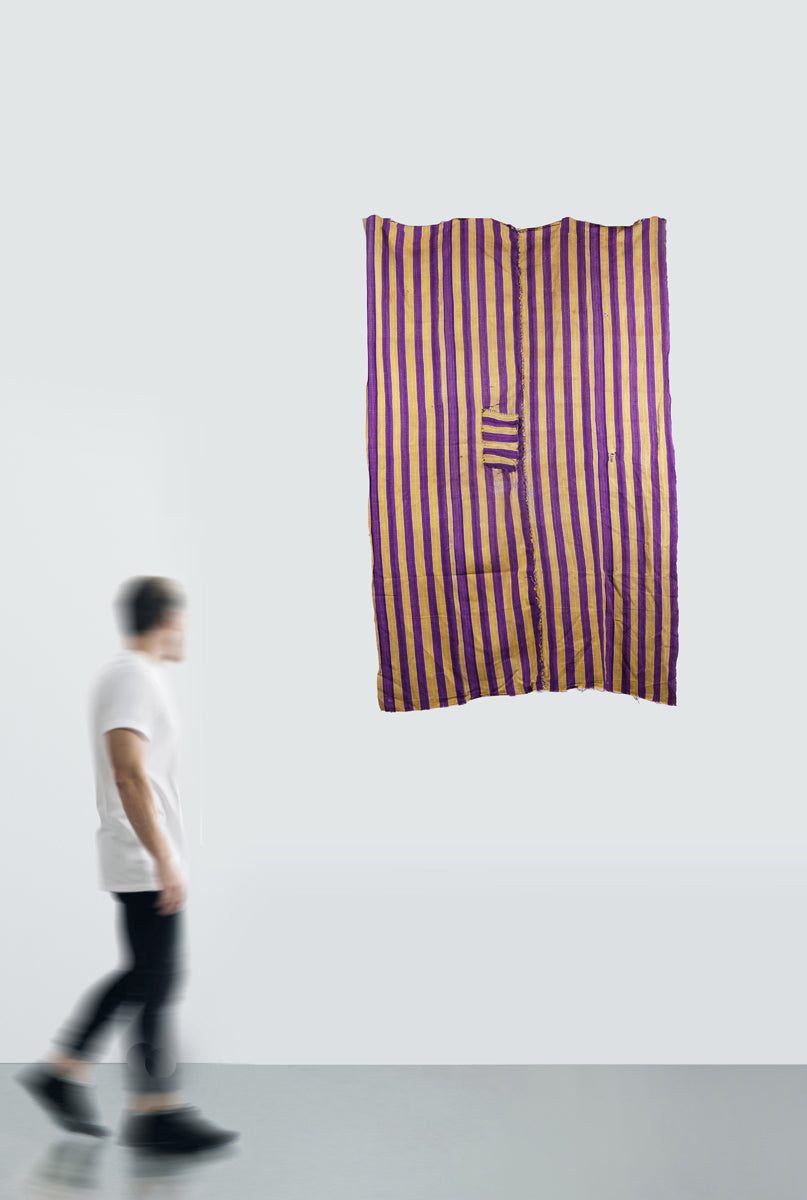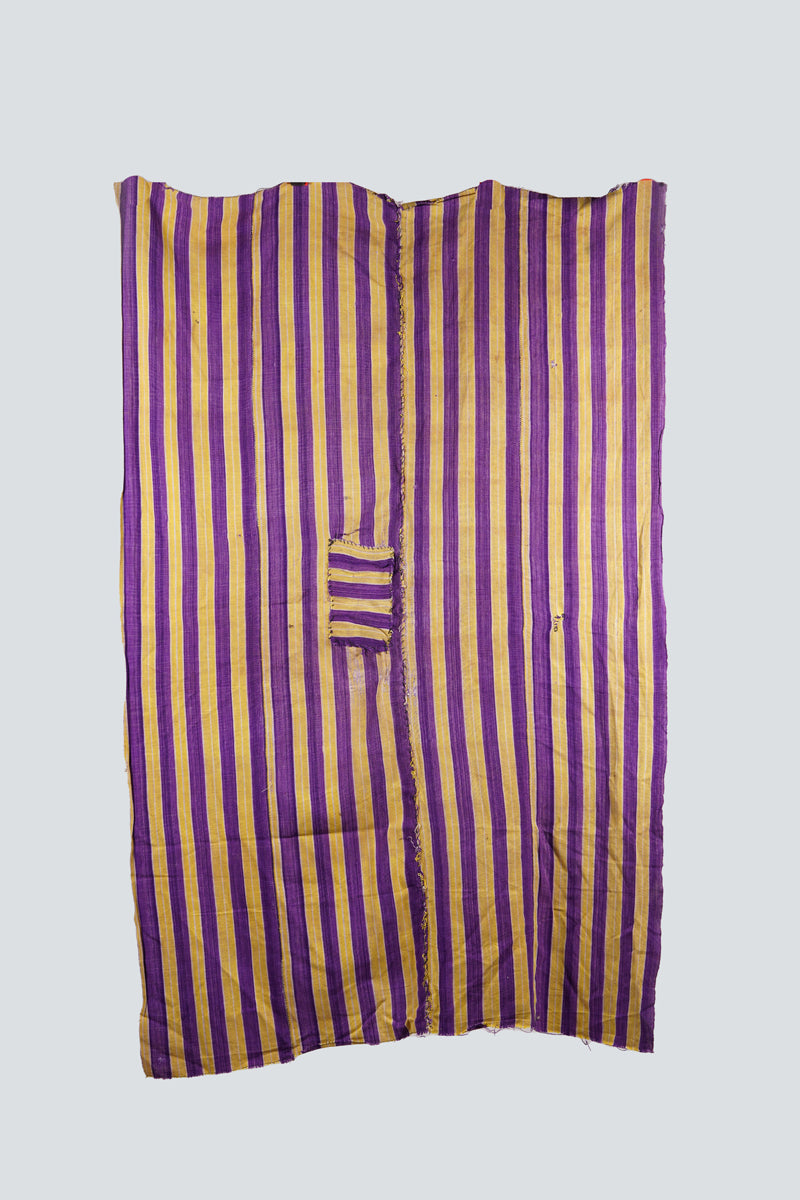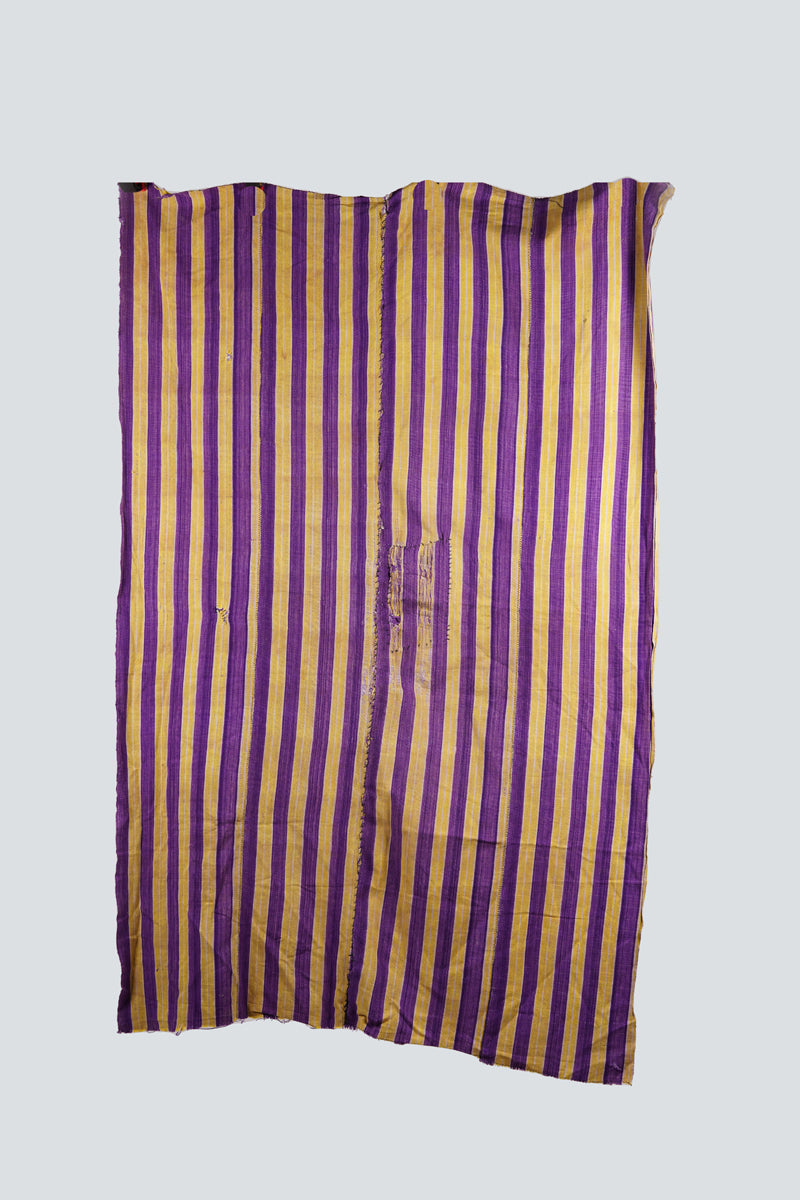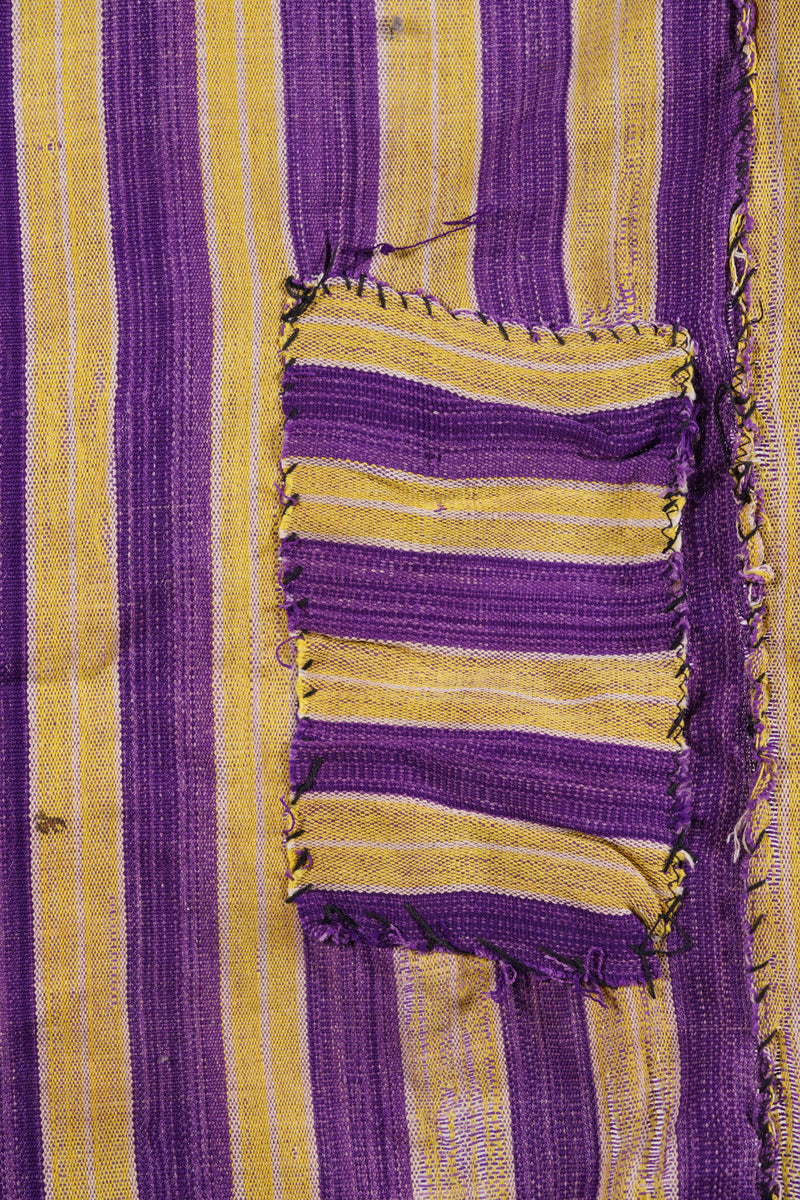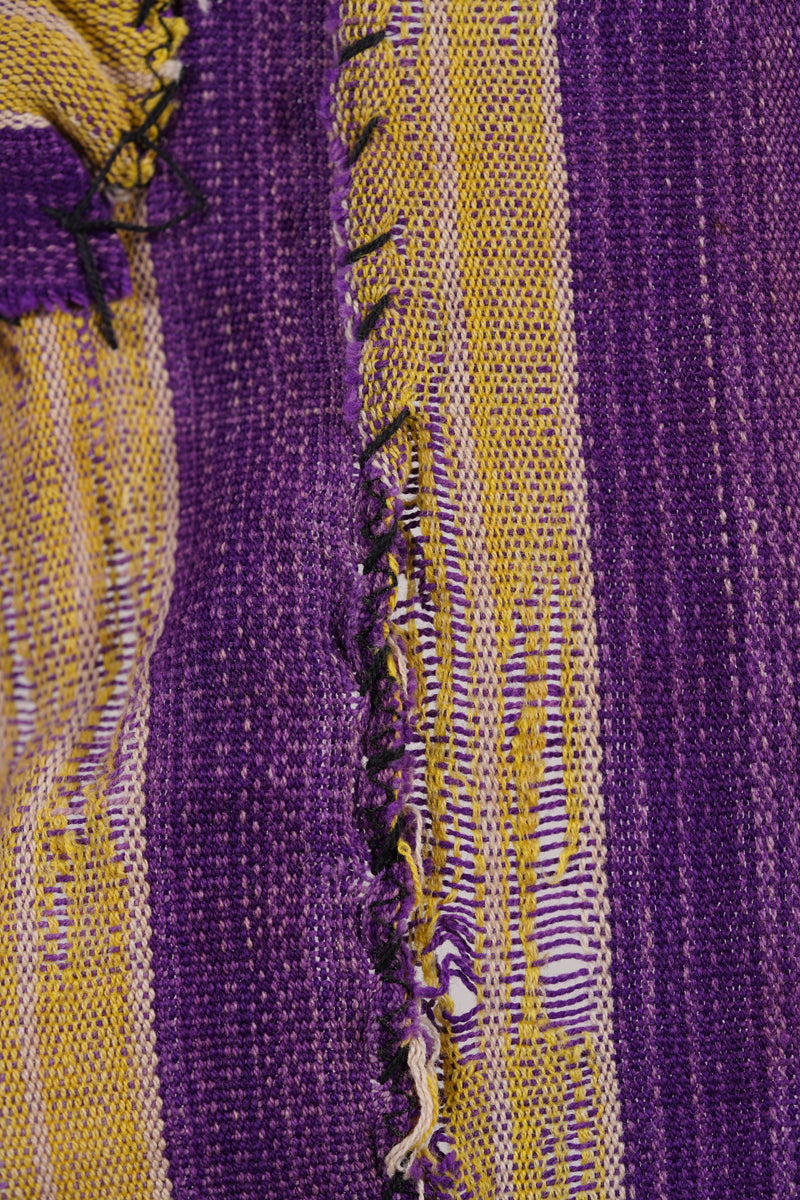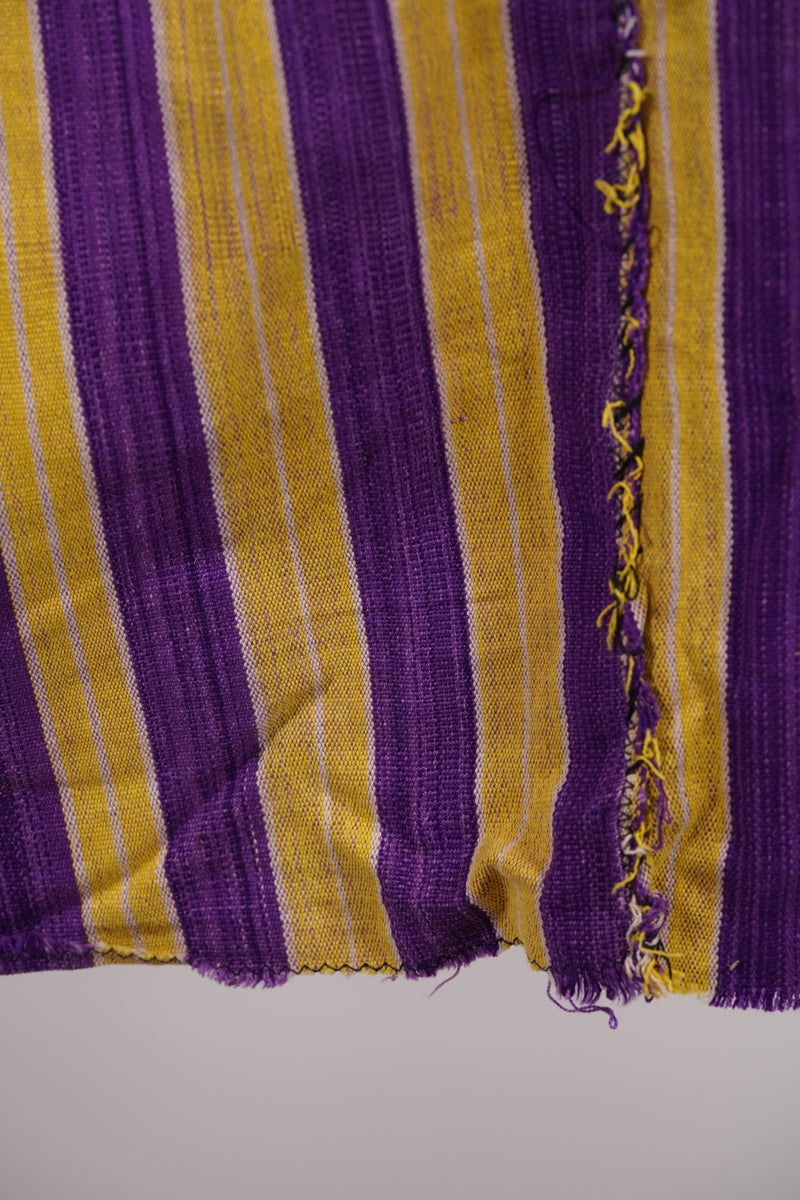wolfgang-jaenicke
A vintage fabric
A vintage fabric
Couldn't load pickup availability
A vintage fabric, Ivory Coast, resist dyed, handspun, stripwoven, with an authentic repair in the center, around 1970.
s. L’exposition "Objets blessés, la réparation en Afrique", qui se tient au Musée du Quai Branly, est née d’une réflexion de Gaetano Speranza, spécialiste en histoire de l’art africain, sur la notion de réparation telle qu’elle est pratiquée sur le continent africain où elle constitue un pivot de la vie économique et sociale."2007.
"What is not loved is inevitably doomed to perish," writes Pasoini in his buccaneer letters. This applies particularly to the textiles shown here. I discovered these textiles in a backyard in Ouagadougou, the capital of Burkina Faso, around 2012. Women were busy washing these "fabrics" in large tubs and then hanging them on washing lines to dry. A few meters away in a covered hangar I saw large bales that weighed more than 100 kg, I was told. What happens to these strange cotton bales that we know from the export of the cotton industry and where do these quantities of old textiles go? They go to the USA via Liomé and arrive there 14 days later. And what then happens to these delicate weavings, each of which often took more than a week to produce? “Well, it is cut up, the faulty parts are sorted out and they are made into sofa cushions.
It is hard to believe how a “cultural asset” can become a soft cushion on a comfortable sofa. “Cultural asset” because these wraparound skirts, or parts of them, worn by women were a sign of which village the wearer of this piece of clothing came from. Similar to the well-known passport masks and the scarifications on people’s faces, which gave information about their individual origins. But in the 1970s, cheap textiles from China came onto the African markets and with them the fate of weaving in Africa was sealed. What had previously been days of work to produce these fabrics could now be bought by women for little money and in an almost unlimited choice of designs.
But not only the individual origins, but also a completely different aspect, known under the western name “mudcloths”, was lost. These coarsely dyed cotton fabrics, which mostly came from Mali, were once “medicine” that was prescribed to a wearer like a drug to cure or at least alleviate certain ailments. The weavings and mudcloths of West Africa are hardly remembered for their original function. Even if we aestheticize them in an exhibition in the Wolfgang Jaenicke Gallery, they are relics of a memory of a lost African culture that has long since disappeared into the shadow of decorative art and has become a product of the tourist markets all over the world.
When I once visited an exhibition by the conceptual artist Lawrence Weiner, there were only empty walls to be seen: When I asked where the exhibits in the exhibition were, the gallery owner replied: “Weiner creates an image of what they imagine, completely individually for them.” It is similar with these often fragmentary and damaged textiles and their staccato of memories about production, use and individual affiliation. In this case, we can immerse ourselves in a distant, alien memory that is long lost, but “as far as the eye can see” Lawrence Weiner, can give our love anew and transformed. wj
"Cloths made up by sewing two or more widths together, selvedge to selvedge, are found in many parts of the world, reflecting the ease with which cloth the width of a weaver's cubit can be woven on a narrow loom. However, it is only in West Africa that cloth is assembled by weaving on double-heddle looms in very long strips from 2.5 to 45.70 cm (1 to 18 in.) wide. They are then cut into requisite shorter length strips and sewn together to form a large rectangular wrap. Evidence of 11th-century garments made up of cotton strip-weaves by the Tellem people has been found in Mali.
Woollen blankets are woven in Mali, but in other parts of West Africa cotton, silk or rayon strips are usually woven to form a voluminous toga-like garment or a tailored robe for men and a smaller cloth for women. The strip-weave kente cloths of the Ashanti and adanudo cloths of the Ewe tribes of Ghana have a distinctive chequered appearance, which is achieved by alternately weaving a warp-faced section (showing the longitudinal stripes of the variously coloured warp threads) and then a weft-faced section (appearing as a horizontal band). An extra pair of heddles is used with the warp threads grouped in sixes so different sheds can be opened for weaving the weft-faced sections. Supplementary weft floats introduce motifs depicting animals, combs, hands and geometric devices into the warp-faced sections." p. 23.
Source: J. Gillow, African Textiles: Colour and Creativity Across a Continent, 2003.
Height: 166 cm
Width: 102 cm







